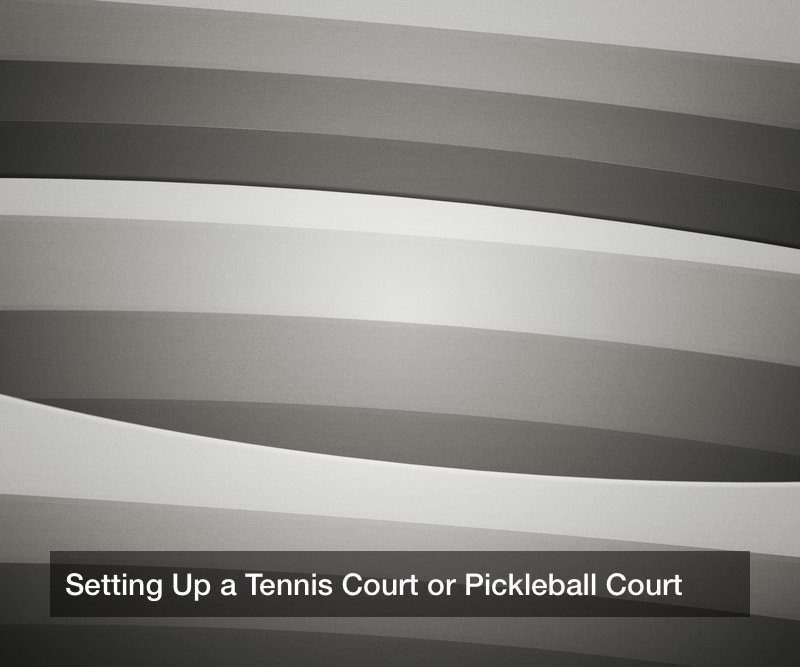
Sports vary widely in how they are played, and some are more physically demanding than others. Soccer and basketball require constant movement and are a great source of cardio, and American football is well known for all the running, throwing, and tackling involved. But not all sports are so intense; many players prefer tennis and pickleball, or similar sports such as squash. Sports like these are a great way to get some exercise, have fun, and learn the value of teamwork, and they are also a fine choice for people not physically fit for more intense sports (such as the elderly). Fortunately, tennis courts are all over the place, such as in sports clubs or in public parks, and some dedicated players can even make their own. Meanwhile, what about the staff at a sports club or resort who need accessories for tennis courts to keep the facilities in good shape? This ranges from buying or replacing tennis court net posts all the way to hopper carts and court cleaning tools to keep the place looking nice.
The Popularity of Court Sports
While baseball, football, and basketball are among the most popular sports played today, tennis and pickleball have plenty of players too, and some tennis players are renowned for their performance. The Tennis Industry Association (TIA) says that according to recent research, this game’s participation grew about 1% to reach 17.9 million players, and pickleball has a base of about 2.46 million players. Meanwhile, the USAPA tracks around 200,000 pickleball players and some 12,668 pickleball courts across North America. Tennis is a great game for casual play and exercise, and many clubs offer lessons for anyone interested, and pickleball can be a great form of exercise for just about anyone. But still, unlike soccer, tennis calls for a court with nets and tall walls to catch the balls, and sports club owners and park managers can concern themselves with the details of building these courts, like getting tennis court net posts and setting up the net.
Building a Tennis Court
Building a tennis court means not only getting tennis accessories, but the court itself, including the floor and putting proper markings on it. One option is to have an outdoor tennis court with grass for maximum comfort and style, and a builder should contact golf construction firms or the like to have the correct grass laid down and the ground leveled enough for gameplay. Take note that this may be a costly and challenging option for some builders, though. Synthetic turf does exist, and such courts are built right over concrete or asphalt. Tough clay-like surface are also standard fare for building a tennis court, or hard courts with acrylic paint.
What comes next? An outdoor tennis court should have some lighting fixtures and rigs set up, so players can play a good game in the evening. Tall chain link fences are also a must, so they can catch flying balls and players can more easily retrieve them, while shorter, more regular fences can keep out random people or dogs in a park. It’s also a good idea to set up outdoor benches under awnings or in other shady spots so players can take a break.
A court will now need accessories such as tennis court net posts, which are installed securely and can have nets draped in between them. Wholesalers can provide various tennis court net posts for a court under construction, and that’s not all. The court is also going to need a seat for the umpire, a score-keeping tracker, plaques that describe each court’s number, water cooler stands, and windscreens on the fences to not only block disruptive wind but also provide some nice aesthetics.
Some tennis courts will need more cleaning and sprinklers than others, depending on their material, and some courts with clay surfaces will need sprinklers to wash them on daily, weekly, and monthly schedules to keep them looking nice. On-site staff can use scrapers and rakes and other tools to clear out dead leaves, trash, and other debris, too.
